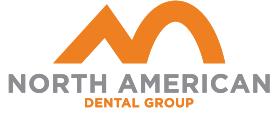December 2020 marked a hopeful turning point in the struggle to contain the spread of SARS-CoV-2 with the emergence of two vaccines in the United States; the first from Pfizer and, shortly thereafter, a second option from Moderna. These vaccines offer promise for an eventual end to the global pandemic and provide hope for a weary society anxious to return to normal living and working. However, quickly vaccinating an entire country is no easy undertaking. It requires a continued commitment from already overworked healthcare professionals nationwide.
To assist with this mission, many states are seeking the aid of other healthcare professionals with experience in administering injections. It should be no surprise that, in some states, dentists and dental hygienists certified to administer local anesthesia have answered the call to work with our medical partners in administering the vaccines. As of this writing, 20 states allow dentists to administer the vaccine after completing training. Additionally, California, Connecticut, Idaho, Kentucky, Massachusetts, Maryland, Nevada, New York, Ohio, Rhode Island, and South Carolina allow local anesthesia-certified dental hygienists to administer COVID-19 vaccinations. Each state has its own regulations and local anesthesia-certified dental hygienists interested in supporting the vaccine effort should check with their state Department of Public Health to obtain requirements.1
Many of us have grown weary over the past year attempting to maintain oral health for our patients while mitigating the risks posed by the ongoing pandemic. By implementing administrative and engineering infection control protocols, along with donning personal protective equipment, we have done our best to work safely within an unsafe environment.2 We continue to work hard to keep our patients, coworkers, and ourselves safe by following new and challenging infection control protocols. The sooner the US can reach herd immunity through vaccination, the sooner dental offices can return to normal patient treatment. Aerosol-producing dental equipment—such as ultrasonic scalers that have been turned down to low power or, in some states, shut off completely—can rejoin our treatment armamentariums.
So how do we get there? First, get vaccinated. The more oral health professionals who get inoculated, the safer our work environments will become. Next, volunteer to be part of the solution. Dentists and dental hygienists can work within their states to encourage legislators to allow oral health professionals to administer COVID-19 vaccines. Contact your state representatives and Congress members. Make them aware that states are allowing oral health professionals to administer vaccines.
Dental hygienists who are local anesthesia-certified must follow all guidelines and receive the needed certifications before attempting to administer the vaccines in their communities. The American Dental Hygienists’ Association provides links to each states’ specific certification criteria.3 Dental hygienists are recognized as potential vaccinators due to their educational qualifications including their expertise in pharmacology and local anesthesia administration. We already understand proper dosing and dispensing protocol, how to safely handle sharps as well as the fragile nature of drugs and proper storage of delicate materials. Oral injections require precision to safely reach their target through small foramina. These qualifications prepare dental hygienists to administer vaccines during the pandemic.
For dental hygienists licensed in Connecticut, the University of Connecticut School of Pharmacology provides an online course that discusses the characteristics of both the Pfizer and Moderna vaccines. Participants learn about proper storage and handling of the vaccines. Needle safety and syringe types are reviewed. Contraindications and potential allergic reactions are discussed, along with target site, anatomy, administration protocol, and technique. Participants must be able to describe the mechanics of intramuscular administration of vaccines. An exam is required to pass the first portion of training. This certificate is needed to move to the next stage: hands on training. Participants register for an in-person session during which needle safety and loading the syringe must be correctly demonstrated for both vaccines, followed by simulated administration of them both. Once both certifications have been completed, the certificates need to be uploaded to Connecticut’s Department of Public Health. Dental Hygienists may then register through the state’s Medical Reserve Corps to volunteer.
Once selected to administer the vaccine, volunteers must be prepared to follow all protocol established by the health department facilitating the clinic. Volunteers may be expected to attend an orientation prior to deployment. Process and workflow will be explained. Documentation requirements will be discussed and demonstrated as well as safety protocols.
As more Americans begin to schedule their vaccine appointments, dental hygiene volunteers will be available to work in pop-up clinics, healthcare facilities, senior centers, and other public arenas made available for administering the vaccine. Assisting our friends in the medical field will only help to strengthen our bond as true partners in healthcare, and will ease some of burden from these overworked clinicians. This can help establish oral health professionals as true partners with our medical colleagues. Dental hygienists hold a valuable skill set that during times of emergency can be used beyond the dental chair.
References
- Pratt Machado K. More than 20 states allow oral health professionals to administer COVID-19 vaccines. Available here.
- United States Centers for Disease Control and Prevention. COVID-19: Guidance for Dental Settings. Available here
- American Dental Hygienists’ Association. COVID-19 Vaccine Administration by Dental Hygienists. Available here.
Author: Carolyn Patenaude, MSEd, BSRDH, CDA
Originally Published: DecisionsInDentistry.com

